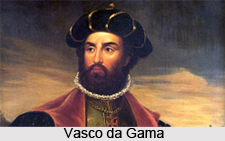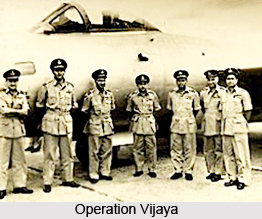 A brief peep into the history of North Goa district reflects a series of changes throughout the region. The interaction of the various cultures brought to Goa across the Sahyadri mountains in the east and the Arabian sea in the west, has left an indelible impression on various aspects of cultural development of Goa. A number of dynasties have also contributed in shaping the history of the district of North Goa. These includes the Bhojas of Chandrapur, Satavahanas Dynasty, Kshatrapa Dynasty, Abhira Dynasty, Chalukya Empire (540-757 A.D), Shilaharas, Kadambas of Goa (1008 to 1300 A.D), Adilshahi rulers of Bijapur (1489-1510) and finally the Portuguese (1510-1961).
A brief peep into the history of North Goa district reflects a series of changes throughout the region. The interaction of the various cultures brought to Goa across the Sahyadri mountains in the east and the Arabian sea in the west, has left an indelible impression on various aspects of cultural development of Goa. A number of dynasties have also contributed in shaping the history of the district of North Goa. These includes the Bhojas of Chandrapur, Satavahanas Dynasty, Kshatrapa Dynasty, Abhira Dynasty, Chalukya Empire (540-757 A.D), Shilaharas, Kadambas of Goa (1008 to 1300 A.D), Adilshahi rulers of Bijapur (1489-1510) and finally the Portuguese (1510-1961).
One of the interesting portions of the historical accounts of North Goa District is associated with the advent of Portuguese. History states that lured by the thrill of discovery and motivated by the prospect of seeking Christians and spices, Portugal embarked on dangerous voyages to the Orient which finished in Bartholomew Dias` trip. This impressive advancement opened new vistas. A decade later Vasco Da Gama set off eastwards and in 1498 landed in Calicut and broke the Arab monopoly of trade.
Furthermore, the other historical changes associated with the formation of North Goa District are as follows -
Estado Da India (1510)
Fired with the dream of establishing an Eastern Empire for Portugal, Afonso De Albuquerque, Governor-General of Goa, set to acquire strategic centres as well as the trade route. At the invitation of the Admiral of the Vijayanagara`s fleet, he occupied Goa with little initial opposition. He successfully regained possession of the city on November 25th, 1510. In the year 1530, Goa became the capital of the Portuguese Empire in the East and mistress of the sea from the Cape of Good Hope to the China Sea.
St. Francis Xavier (1542-1552)
The arrival of a young Spanish nobleman turned Jesuit, with a brilliant background of academic learning, created a tremendous impact. Two years after his death in 1552, the incorrupt body of the saint was preserved in Goa. It continued to attract pilgrims from all over the world even today.
Jai Hind Movement (1946)
In August 1946, at Londa on the border, in a mass meeting of Goan nationalist workers, a plan of non-violent action was sorted out. To express the people`s longing for freedom, satyagrahas or freedom movement were launched in different parts of the Portuguese enclaves.
 Goa Action Committee (1953)
Goa Action Committee (1953)
After the French withdrawal from India an ineffective attempt was made by the Government of India to negotiate with Portugal for a peaceful transfer of its possession to the Indian Union. Consequently the Goa Action Committee was formed in Mumbai to awaken sympathy for its cause within the country and abroad.
Operation Vijaya (1961)
In the year 1958 all parties amalgamated under the banner of Goan Political Convention presided over by Professor Aloysius Soares. Further, in a carefully planned action by Armed forces, the Government of India entered Goa. After a slight resistance again on December 1961, Goa was liberated from the Portuguese to remove the last remnants of foreign domination in India.
History of North Goa District also recounts that after the liberation of Goa from foreign control the Opinion poll was held on January 16th, 1967. It was held for deciding whether Goa would continue to be a part of Indian Union Territories or merge with Maharashtra.
Goa as Union Territory
The area of Goa as a Union Territory of India was constituted into a district in the year 1965 and the first Collector of Goa took charge on March 29th, 1965. The deputy Collectors for two divisions of the district, namely North Division and South Division were also appointed. Goa was declared a state on 30th May, 1987 and was divided into two districts North Goa District and South Goa District. The composite Collectorate of Goa was bifurcated into Collectorate North Goa District and South Goa District having their respective headquarters at Panaji and Margao.



















